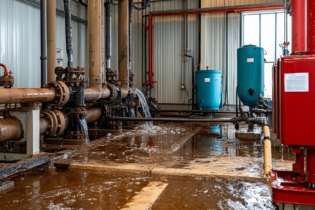Everyone needs water in sufficient quantity and portable quality to live a healthy life. The many uses of water are directly related to the economic, social mental and physical health of the world’s population. Almost two billion people drink water most would not use to wash their car or clothes.
Another 1.4 billion wish they had that water to drink. In many parts of the world, getting enough water to survive is a daily crisis. The magnet of attraction of people to water has no “like” and “unlike” poles- both sides attract each other as water moves on and on to everybody’s life to boost their capacity to enjoy the globe. Water wise, the world is now divided into three parts: sufficient, insufficient and polluted. WHO (2008) established that more than 2.2 billion people did not have enough clean water to meet their daily needs. Even more disturbing, 74% of all diseases and sickness in the developing world are related to water and inadequate sanitation. For the last twenty years, millions of people have been working on and for water- tens of thousands of leading politicians, economists, scientists and representatives of the civil society, have been fighting for efficient management of water resources and to ensure that people have the ‘right’ or unchecked access to it. Hundreds of programmes, projects and declarations have been approved, applied and implemented. Tens of billions of dollars, in addition to local expenditure have been allocated and invested. Yet despite all this, ‘a crisis is looming’ and there is still a talk of the ‘water bomb’ about to explode! The incomplete explanation of the ‘water crisis’ is the fact that about 1.4 billion people the world over have no access to safe drinkable water. According to UNICEF, about 1.5 million children below five years die every year from diarhoea and other preventable water-borne diseases like cholera, typhoid and dysentery. Despite the fact that access to safe water and basic sanitation were among the Millennium Development Goals (MDGs), safe water still eludes many. Major challenges to provision of safe water are inadequate government funding, limited capacity of the responsible government institutions to deliver services, and continued forest and wetland degradation justifying the implications of climate change/global warming. Many different reasons have been given to explain (though hardly to justify) this situation. The reasons for the so-called water crisis may be classified into four categories. One, the great inequality in the distribution of water resources which involves grave local scarcity in certain areas like the cattle corridor of Uganda from Isingiro through Sembabule, Nakasongola to Kabong districts, the Teso region and other regions all over Africa. The threshold at which drinking water scarcity begins has been set at 1 000 cubic metres per person per year or an average of 2.74 litres a day. Below 500 cubic metres, the situation becomes critical, while between 100 and 200 cubic metres, it is described as one of ‘water stress”. According to the International Water Association (IWA), 60% of water resources are situated in just nine countries (including Brazil, United States, Russia, Canada, Indonesia, South Africa etc), whereas eighty countries representing a “total of 40% of the world’s population are faced with the scarcity of water.The regions most affected are North Africa, and the Middle East, where less than 1 000 cubic metres a year per person (the scarcity threshold), can be harvested without eating into the region’s water capital. Nine of the fifteen Middle East countries suffer from water scarcity, whereas the possible water harvest is as high as 5 072 cubic metres per person in Sub-Saharan Africa and 22,000 cubic metres in Latin America.
This distribution does not immediately say it all; because the USA, Brazil, Russia, South Africa, China are water–rich countries does not mean that they are free of serious supply problems. Recently, for example, shortages have hit Northern China in December 2011, California early this year and South Africa up to today – and they usually affect social groups and regions within the same country differently, regardless of its overall water resource level. The second category of reasons; Waste water and more generally inefficient management of water sources – are said to have caused a total decline of 37% in the possible water harvest, which now averages 7 400 cubic metres per person. What counts most is the proportion of the water supply that is wasted. Agricultural irrigation loses an average of 35% of the water they consume and 45% of the world’s treated drinking water is lost through leaking from the distribution systems. For developing countries like Uganda, water for agriculture can provide a sustainable answer to questions related to the challenges of getting reliable and sustainable supply of clean water. If the cap fits at whatever level, we can ably wear it. If not, why not? The Geneva-based United Nations Economic Commission reveals that, Agriculture (mainly irrigation) absorbs a world average of 60% of water supplies, and will be rising to 70 or 80% in developing countries, this compares with an average of 20% for industry and 10% for domestic and other uses.Everything suggests that, unless there are radical changes embraced at all levels, water consumption will continue its high rate of increase as a result of population growth, economic activity and wide spread pollution. The more that the contamination of water on or beneath the surface forces deeper drilling, the more costs will rise and the greater will be the damage to the ecosystems (lowering the water table). According to United Nations Industrial Development Organization, Industrial activities could absorb twice as much water by 2025, and industrial pollution could increase four fold. The fourth major category is population growth. Twenty five years from now there will be two billion extra people on earth, most of them swelling the mega cities of the developed world. Of course, we can consider the main reason for water crisis to lie in the growing surfeit of human beings for a limited and shrinking resource. This is the ‘water bomb’ that is supposed to be ticking away according to the World Commission on Water for the Twenty-first Century! The call for the water revolution is justified by the fact that water is a scarce resource, a vital economic and social asset. A rational and effective water policy should aim to achieve and maintain the best possible quality, and to this end more and more infrastructural and maintenance investment is of a paramount importance to guarantee access to life to every human being and living organism. Source: independent.co.ug






